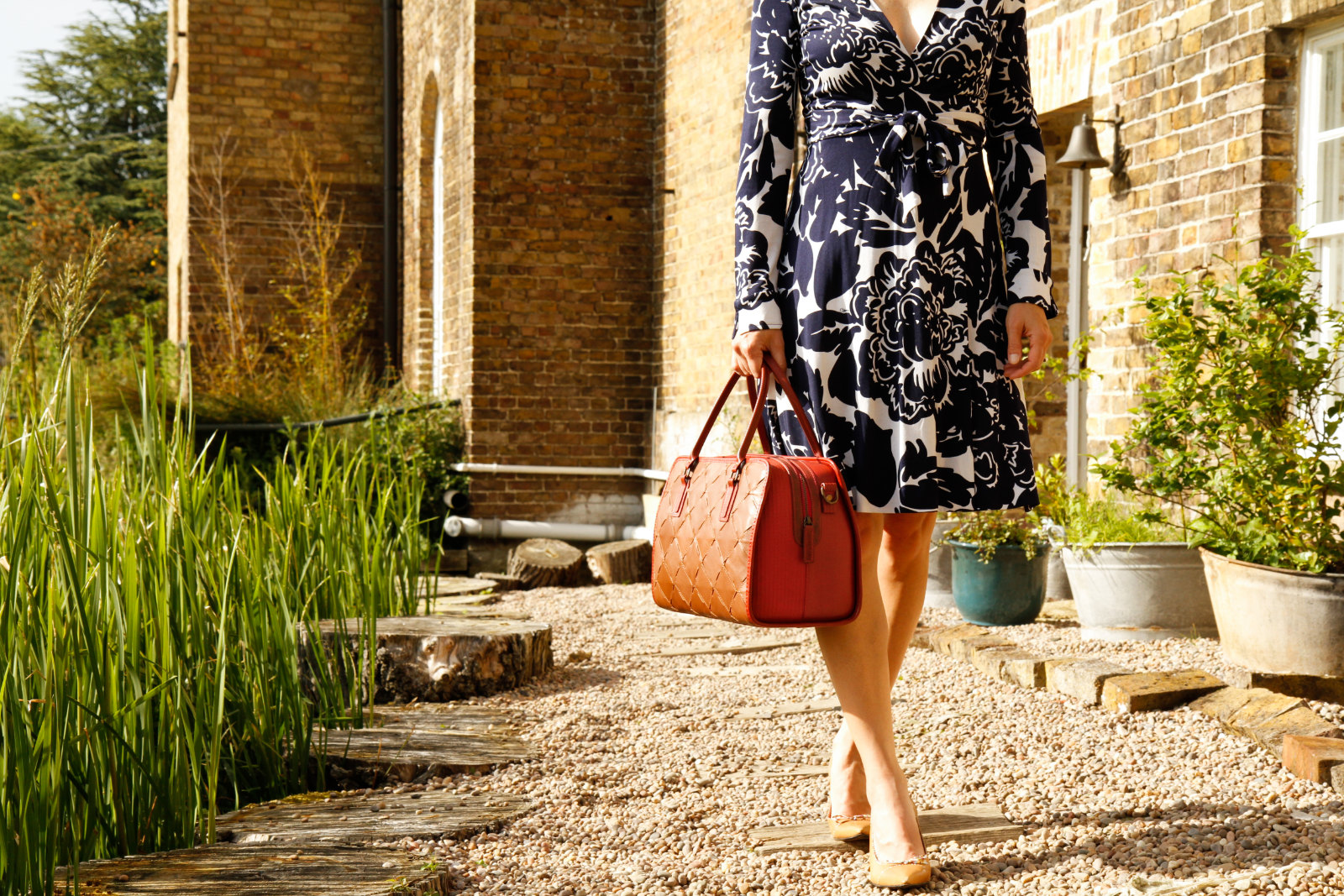
FASHION Sustainable accessories’ label Elvis & Kresse—which began by finding a new second life for discarded London Fire Brigade hoses—has an inspirational story that now sees it partner with the Burberry Foundation to handle its leather waste. Jack Yan spoke to co-founder Kresse Wesling
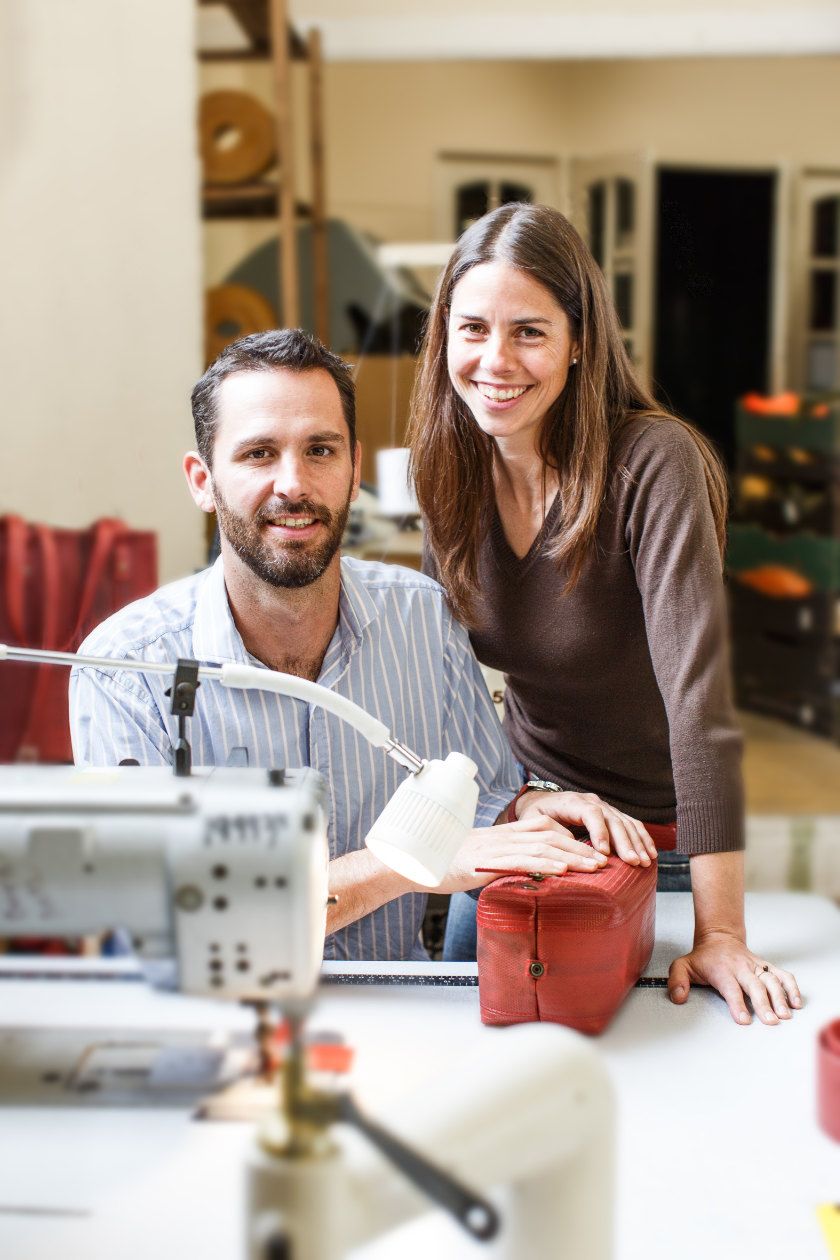 Jack Terry
Jack Terry
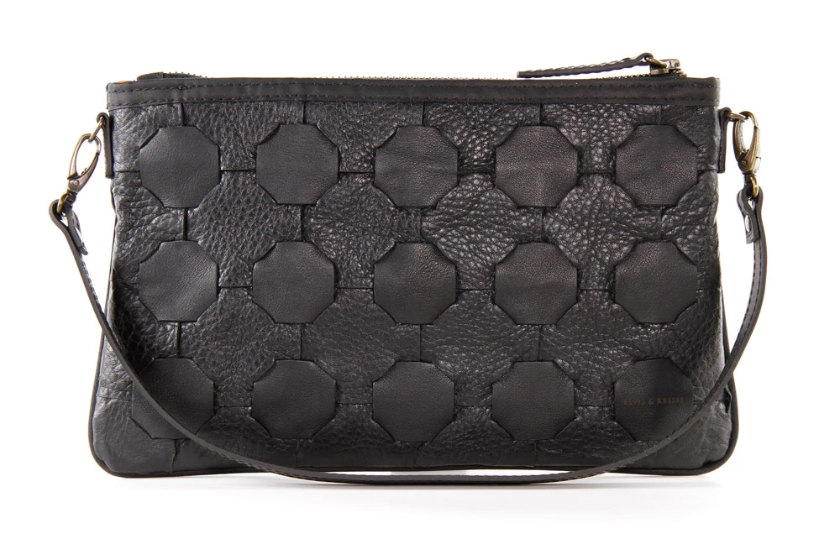
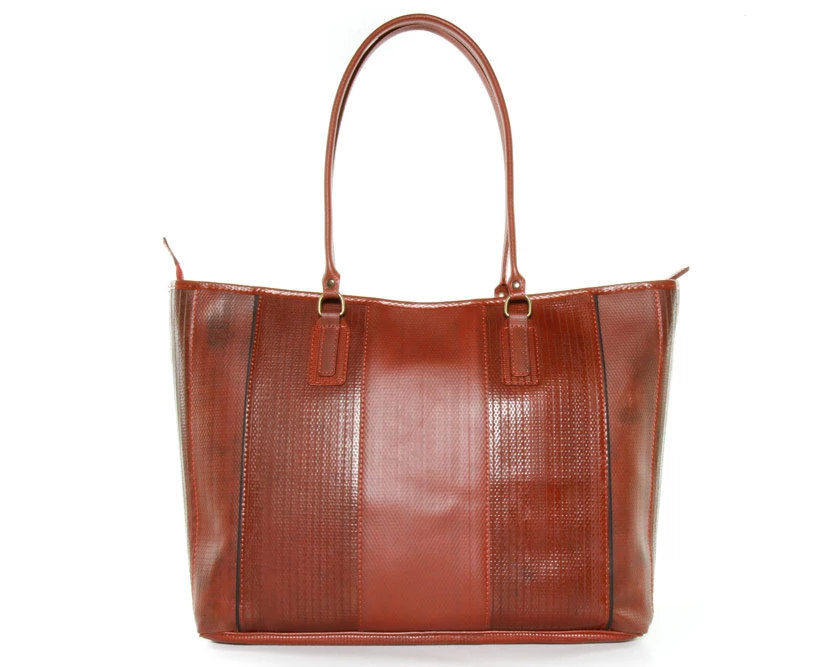
Above, from top: Elvis & Kresse in person: James ‘Elvis’ Henrit and Kresse Wesling. The hand-made-to-order Elvis & Kresse × Livari clutch, £160. The red tote bag, £210.
Jack Yan is publisher and founder of Lucire.
Lucire has covered sustainable fashion for a long time. From the moment we began partnering with UN Environment 16 years ago, we’ve come across many inventive brands that are particularly resourceful in their upcycling. However, Elvis & Kresse’s strikes a chord whenever we tell people how they started: creating belts from discarded fire hoses from the London Fire Brigade.
Since their humble start in 2005, Elvis & Kresse, founded by James ‘Elvis’ Henrit and Kresse Wesling, has grown to become one of the UK’s highest-profile sustainable accessories’ brands. In 2017, they started a partnership with the Burberry Foundation where 120 tonnes of leather offcuts from the storied British brand will be used for new Elvis & Kresse products.
They’ve stuck to their promise to ensure that profits go to deserving causes: the fire hose-based products see 50 per cent of profits go to the Fire Fighters’ Charity, while the Burberry partnership sees profits go to charities working with renewable energy.
Wesling is more the brand’s public face, looking after business development and their customers, while Henrit—now her husband—works behind the scenes, running design and production. A Canadian by birth, she won a scholarship at 16 to complete the International Baccalaureate in Hong Kong, spending ‘two amazing years at the United World College there. These two years definitely shaped my future as I then studied Chinese and politics at university, spent a year of my university in Beijing, and when I graduated I went back to Hong Kong to work.
Her Hong Kong work experience began after a chance meeting with a venture capitalist, which saw Wesling grounded with experience in finance. ‘I … got to examine all kinds of businesses and explore why they succeeded or failed. I learned how to spot pitfalls related to pricing, cashflow, debt burden, burn-out, team dynamics … It was definitely an education that I have put to good use!
‘I think every entrepreneur has their own approach but for me, unless you truly understand your costs and design a business model to prevent being crippled by cash issues, then you will always have too much stress,’ she says.
Hong Kong was also fortuitous for Wesling personally: ‘I met Elvis and after four years there we decided to relocate to the UK, where he is from.’
They headed to London in 2004. ‘When I first arrived in London, I decided to do a bit of exploring—and for me that means looking at the environmental situation. I have always been fascinated by waste, so I started to do some research at the British Library and discovered that in 2004, the year I arrived, approximately 100 million tonnes of waste went to UK landfills. I was overwhelmed by this eye-watering, inconceivable amount and set out on a tour of landfill sites to try and understand why we were so wasteful and what could be done about it.’ Wesling says that her fascination has been with her since childhood, including trips to the dump with her father, and school field trips to recycling centres and sewage treatment plants.
What followed was another chance meeting with two members of the London Fire Brigade at an environmental reporting seminar, around the time she was completing her tour of landfill sites. ‘I instantly fell in love with their damaged, decommissioned hoses and was determined to rescue them. Initially we had no idea what we would do with them but despite that, on the day I first saw the hose, I promised the London Fire Brigade that if I could generate a profit then I would share 50 per cent with them. It was very much a spontaneous idea and they initially thought it was funny.’ Since then, however, ‘We have been making increasingly large donations for over a decade now and it truly is a wonderful partnership.’
Researching Elvis & Kresse, there are numerous donations, with Wesling handing over cheques with five-figure amounts on them. It makes perfect sense: not only do the donations benefit injured firefighters and help with their recovery, it ensures a regular supply of their raw material.
Decommissioned fire hoses are a tough, durable material, which can survive up to 25 years. However, at the end of their original life, they are scrapped, since they are made of a double-walled composite (a nylon core with a nitrate rubber jacket) that cannot be shredded and melted to make new hoses. For Wesling, seeing them go to landfills was not an option, and since 2005, over 175 tonnes have been reclaimed.
She also ensured that their business would not cause them stress, and built longevity in from the outset. ‘By having a solid business model we have so much more time to focus on wonderful things like our charitable partnerships, workshop experiences, apprenticeship programme, and a whole host of r&d projects to help us rescue more materials.’ Those additional materials include auction banners, tea and coffee sacks, shoe boxes, and military-grade parachute silk, and these find their way not just into Elvis & Kresse designs, but also the packaging they use to send their products in.
The design process is what Wesling describes as ‘backwards’ to what traditional designers do. ‘In our current linear world, designers start with an idea, then they acquire the materials to achieve their design. There is little or no thought around what might happen when that product dies or what kind of damage might be caused when certain materials are chosen.
‘Elvis & Kresse does the opposite. We design backwards. We start with waste, not with ideas. We start with problems. Elvis & Kresse was launched to solve the fire-hose problem and ensure the best possible second life for the hoses. Equally, we don’t design based on seasons or trends. We don’t offer seasonal collections. We research classic, useful products and then interpret them through our materials. We then pour love and craftsmanship into each piece to make sure that all of our rescued materials enjoy a long and healthy second life,’ says Wesling.
The products are certainly stylish. Elvis & Kresse’s bags are some of our favourites from their current range: often they retain the red from the hoses, including the markings, and they are designed to use as much of the material as possible. The totes and post bags are among the ones that have a timeless look, and the equally timeless Elvis & Kresse × Livari clutch bag uses Burberry offcuts, one of the signs of the partnership. There are cases for laptops and Ipads, as well as Iphones (5 to X are catered for), in a variety of colours. Red is the most common (making up 95 per cent of London fire hoses), though occasionally they come across yellow, blue and black hose. Given the labour-intensive manufacture, the prices are very reasonable.
continued below
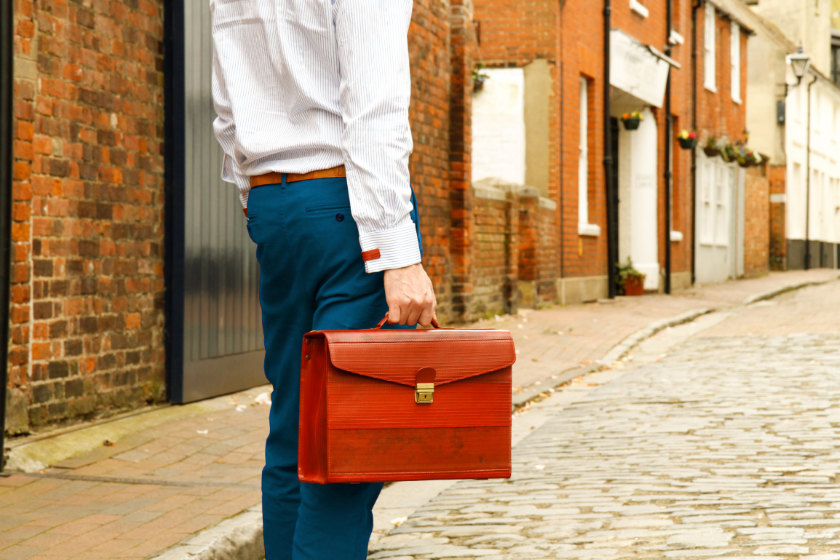
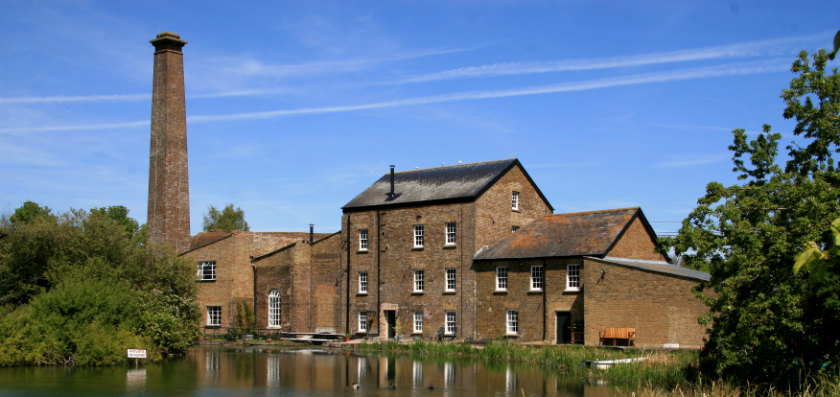 Top: The attaché case, made from upcycled London Fire Brigade hose. Above: Elvis & Kresse’s location at Tonge Mill, Kent.
Top: The attaché case, made from upcycled London Fire Brigade hose. Above: Elvis & Kresse’s location at Tonge Mill, Kent.
While some of the celebrity set has discovered Elvis & Kresse, Wesling points out that their customers come from all walks of life. ‘We couldn’t exist without all of our wonderful customers and absolutely love the fact that most of them become the most fantastic advocates for material rescue and sustainable luxury. Among our customers we are proud to have heroes from fire services all over the world, teachers, doctors, inventors, students, parents, grandparents, activists, chefs, musicians, pilots, engineers, farmers, lawyers, bankers, academics, actors, sportspeople, entrepreneurs, creatives, and hard-working planet-loving people.’
They are gaining a reputation for doing more than just fashion, too. One client came to Elvis & Kresse wanting a kitchen designed, using the same philosophy with repurposing existing materials. ‘We always use the same values, we start with the waste and then make it work for each particular challenge. We got slightly lucky with the kitchen as we had designed and built two kitchens for ourselves by then, and we had a general idea of what would work and what wouldn’t. Our process is naturally one that requires constant adaptation, to suit the materials at hand, so it was also important that our clients really love the way we work and support our wider rescue mission.’
While there is a ready source of materials, finding craftspeople proved difficult. ‘The offshoring that happened decades ago has definitely left a huge skills’ shortage,’ says Wesling. ‘This is why we started an apprenticeship programme in 2013 and haven’t looked back. We have an incredible chief craftsman who is helping to train our own team. This is a slow process as it takes several years to master some of the skills involved, but it is incredibly rewarding for everyone involved.’
The same year, Wesling was made an MBE, though she says they ‘celebrated it together and know that it was recognition for solving London’s fire-hose problem.’ The couple find that they have different strengths and use them to the business’s advantage.
They also moved to Kent in 2013, as they needed storage space, and the city was unaffordable. Henrit spotted Tonge Mill near Sittingbourne, dating from 1837. The mill wasn’t in great shape, but they began renovating it, and today it houses their home as well as the workshop.
‘Rather amazingly, we managed to do the bulk of the restoration in the first two years.’ Wesling recalls. ‘We had an interesting routine: Elvis and I would wake up early and work for around two hours on the building, then do a full day on the business and then switch back to DIY mode for a few more hours in the evening. Luckily the building is arranged in four separate components so we were able to tackle them one by one. When we were finally finished it just felt incredible, to have brought a piece of history back to life and to be able to take the odd weekend off!’
Some of Elvis & Kresse’s manufacturing is done at Tonge Mill, with the remainder in İstanbul, as there is still a healthy leather craft sector there.
The Burberry partnership has brought new demands. ‘Luckily we have five years to scale up to meet the 120-tonne challenge! We have definitely had to increase production and sales in order to scale and adapt to having so many colours. For years we have been an almost entirely red brand … so the adjustment to colour has been one of the most fun challenges. We have also had to increase our space, and although we are not even two years into the partnership we are already bursting at the seams.’
With half of their sales coming from the UK, and more from Europe and the US, Elvis & Kresse looks set to grow even more substantially. The company has had its share of challenges in the first 14 years, overcoming each one. It’s one of the best examples we’ve come across of a company that has a vision and has stuck to it—and that sort of authenticity is, increasingly, what fashionable consumers seek today. •
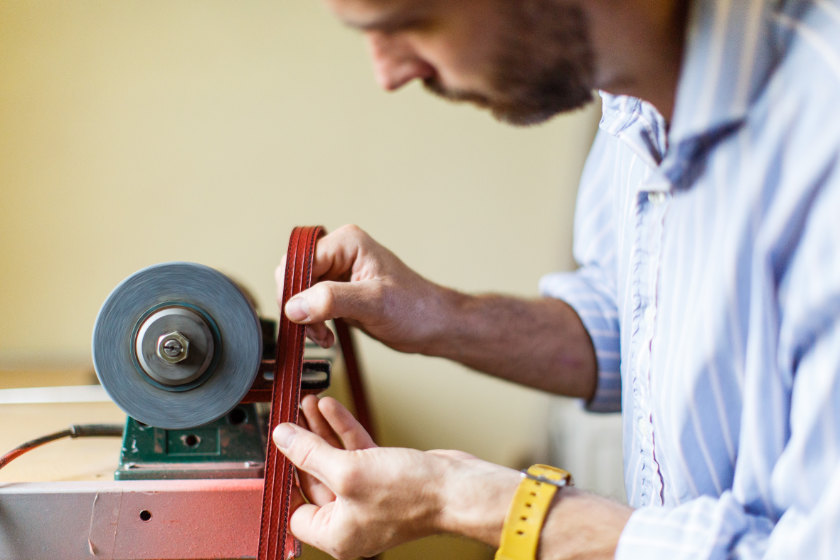
 Jack Terry
Jack Terry
Related articles hand-picked by our editors
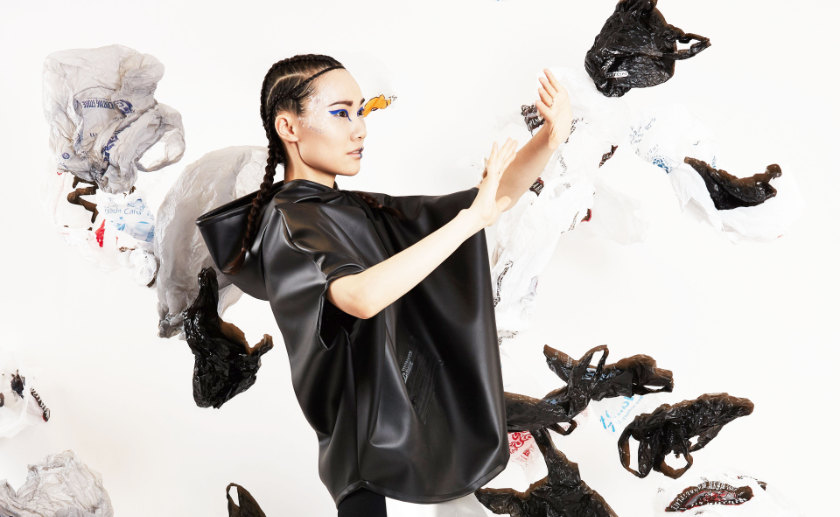
Halo effect
Malaika Boysen Haaning, the designer behind Malaika New York, differentiates her label through its commitment to zero waste. Jack Yan interviews the Danish-born, US-based designer
First published in the April 2020 issue of Lucire KSA
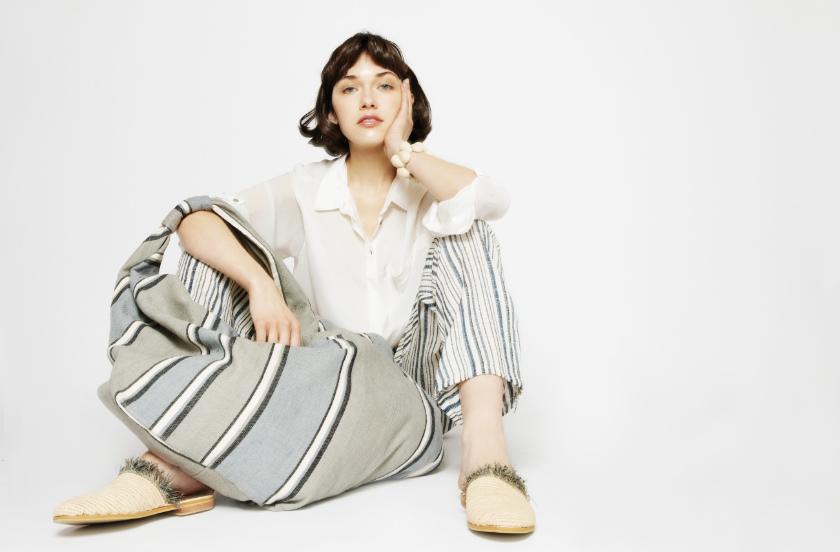
Exchange you can believe in
Some fashion labels merely preach sustainability. Abury goes several steps further, equipping communities and inspiring creativity. Jack Yan talks to its founder Andrea Bury
Photographed by Suzana Holtgrave
First published in the July 2019 issue of Lucire KSA
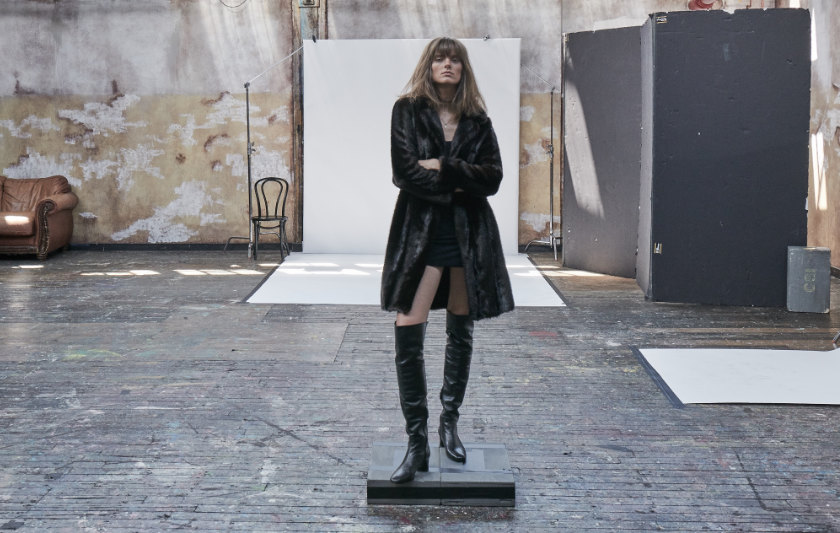
Getting real on faux fur
We look at House of Fluff, one of faux fur’s premier labels that gained such a fast following that it was called upon to re-create Elton John’s coats in Rocketman. Jack Yan interviews House of Fluff founder Kym Canter
From issue 41 of Lucire and the January 2020 issue of Lucire KSA
Advertisement
Copyright ©1997–2022 by JY&A Media, part of Jack Yan & Associates. All rights reserved. JY&A terms and conditions and privacy policy apply to viewing this site. All prices in US dollars except where indicated. Contact us here.